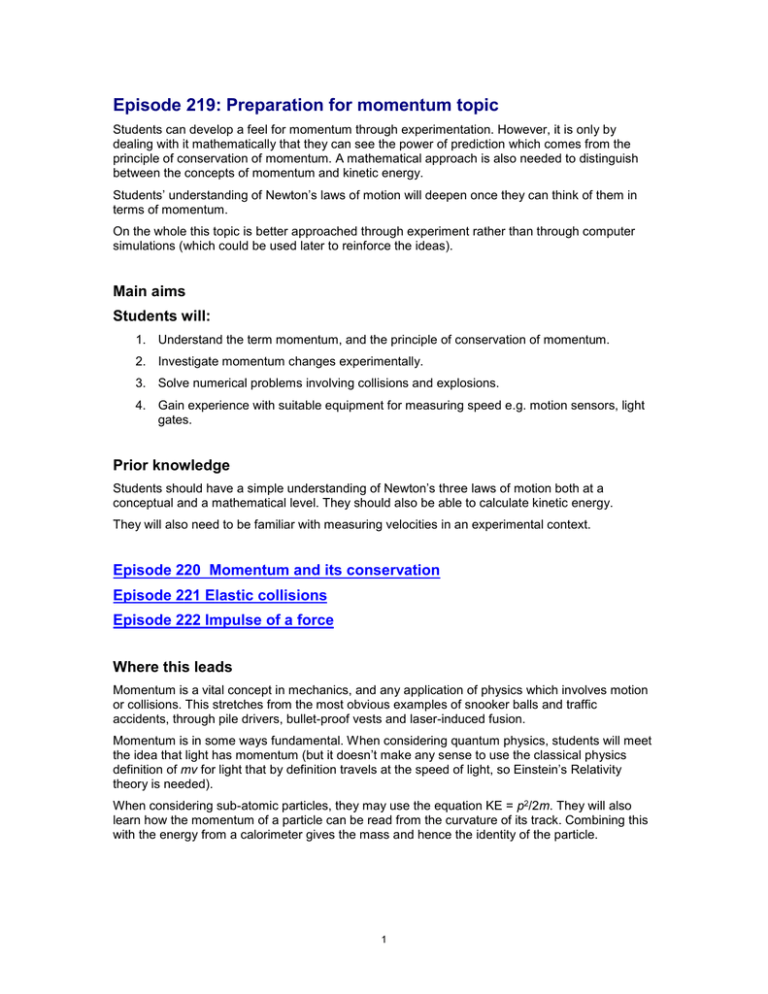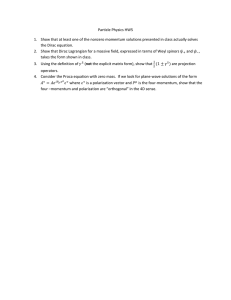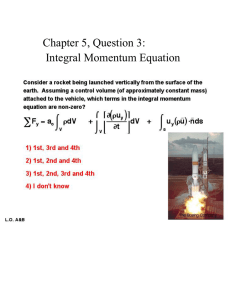Episode 219: Preparation for momentum topic (Word, 32 KB)
advertisement

Episode 219: Preparation for momentum topic Students can develop a feel for momentum through experimentation. However, it is only by dealing with it mathematically that they can see the power of prediction which comes from the principle of conservation of momentum. A mathematical approach is also needed to distinguish between the concepts of momentum and kinetic energy. Students’ understanding of Newton’s laws of motion will deepen once they can think of them in terms of momentum. On the whole this topic is better approached through experiment rather than through computer simulations (which could be used later to reinforce the ideas). Main aims Students will: 1. Understand the term momentum, and the principle of conservation of momentum. 2. Investigate momentum changes experimentally. 3. Solve numerical problems involving collisions and explosions. 4. Gain experience with suitable equipment for measuring speed e.g. motion sensors, light gates. Prior knowledge Students should have a simple understanding of Newton’s three laws of motion both at a conceptual and a mathematical level. They should also be able to calculate kinetic energy. They will also need to be familiar with measuring velocities in an experimental context. Episode 220 Momentum and its conservation Episode 221 Elastic collisions Episode 222 Impulse of a force Where this leads Momentum is a vital concept in mechanics, and any application of physics which involves motion or collisions. This stretches from the most obvious examples of snooker balls and traffic accidents, through pile drivers, bullet-proof vests and laser-induced fusion. Momentum is in some ways fundamental. When considering quantum physics, students will meet the idea that light has momentum (but it doesn’t make any sense to use the classical physics definition of mv for light that by definition travels at the speed of light, so Einstein’s Relativity theory is needed). When considering sub-atomic particles, they may use the equation KE = p2/2m. They will also learn how the momentum of a particle can be read from the curvature of its track. Combining this with the energy from a calorimeter gives the mass and hence the identity of the particle. 1






